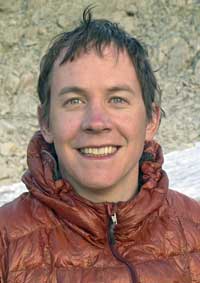Time Series Analysis (02.-06.03.2026)
Lecturers: Thomas Laepple
Time series, a sequence of observations given at a sequence of time points, are ubiquitous in geosciences. Two main branches of time series analysis exist. Methodologies applied in the time domain and frequency domain analysis tools (‘spectral analysis’). In this course you will learn the basic concepts of time series analysis using both complementary approaches. A special focus is on the application of these methods to geological or climate related datasets also discussing pitfalls and caveats.
The teaching format is a mixture of theoretical lessons, hands on exercises and analysis of your own datasets.
At the end of this course you are able to understand the basics and apply linear time-series modelling, spectral analysis and the exploratory analysis of time-series using tools in the time and frequency domain. You will be able to perform these analyses using the statistical software R and to better judge published results involving time-series analysis.
The analyses will be performed in R and require some previous knowledge of a programming language (it doesn’t need to be R). For interested students, we offer an introduction into R.
The exam will be an homework assignment applying the methods learned on individual datasets and delivering a report
and the code (in your programming language of choice)
schriftlicher Bericht
Shumway, R. H., & Stoffer, D. S. (2017). Time Series Analysis and Its Applications: With R Examples (4th ed.). Springer International Publishing. https://doi.org/10.1007/978-3-319-52452-8
1st SWS: Characteristics of Time Series & Exploratory Data Analysis. Computer lab: Introduction into time-series analysis with R
2nd SWS: Time-series models, regression, linear filters. Computer lab: Time-series analysis on own or supplied datasets
3rd SWS: Fourier transform & power spectrum. Computer lab: : Numerical experiments spectral vs. time domain
4th SWS: Spectral estimation, strategies and pitfalls. Computer lab: : spectral analysis on own or supplied datasets
5th SWS:
6th SWS:
7th SWS:
8th SWS:
9th SWS:
10th SWS:
11th SWS:
12th SWS:
13th SWS:
14th SWS:
Notebook-Pool
Basic Data
05-MMG-PD1-3
Study Program
Master Marine Geosciences
Module Name
Advanced Digital Competences
Course Type
Lecture, Exercise (L+E)
First Year of Study
3 CP
3 SWS
Winter Term
Course Language
English
Contact Person

Erdsystemdiagnose
Prof. Dr. Thomas Laepple
AWI 4773R
Phone: +49 331 58174-5602
Thomas.Laepple awi.de
awi.de
Erdsystemdiagnose
Prof. Dr. Thomas Laepple
AWI 4773R
Phone: +49 331 58174-5602
Thomas.Laepple awi.de
awi.deLecturer

Erdsystemdiagnose
Prof. Dr. Thomas Laepple
AWI 4773R
Phone: +49 331 58174-5602
Thomas.Laepple awi.de
awi.de
Erdsystemdiagnose
Prof. Dr. Thomas Laepple
AWI 4773R
Phone: +49 331 58174-5602
Thomas.Laepple awi.de
awi.de
